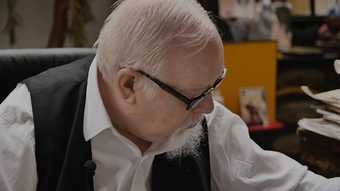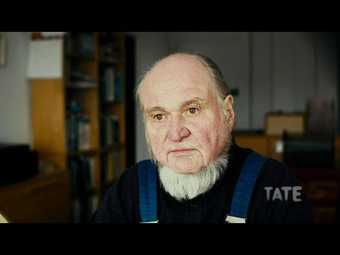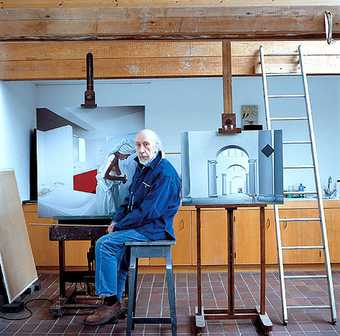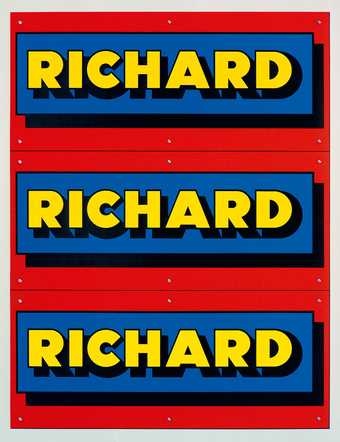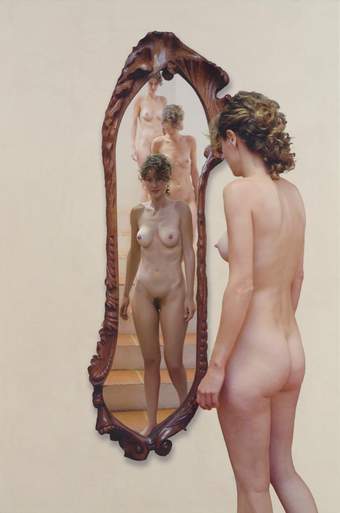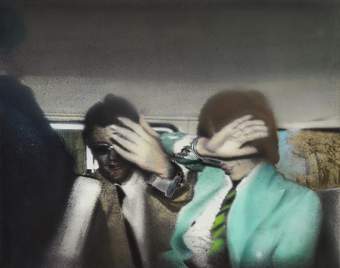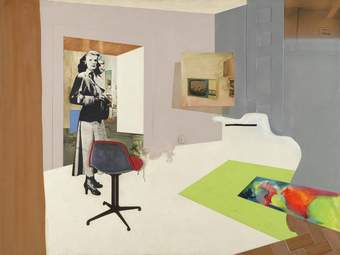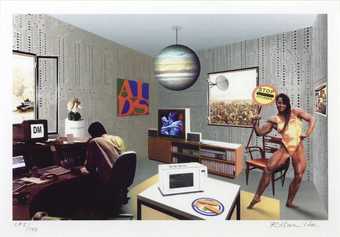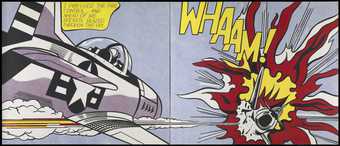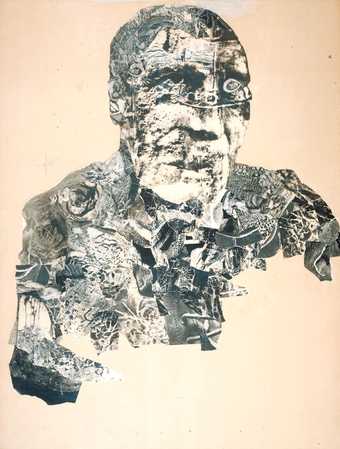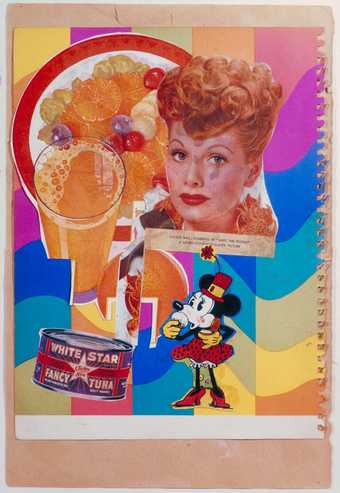I’m kind of curious now about my awareness of Richard Hamilton. I mean, it is work that I know from the late Sixties/early Seventies. I was aware of pop. I mean, pop was the… when I was a teenager growing up in Manchester, it was an aesthetic which I could understand. And so I would look at pop books. I read enough to kind of understand Richard Hamilton’s place as perhaps, you know the godfather of pop, and I remember particularly in a book, seeing Hamilton’s definition of pop, and the ten or eleven kind of criteria: sexy, mass-produced, disposable, big business, glamorous – that made a very big impression on me. This particular work by Hamilton; this is the Toaster. It’s a screen print, litho print, has a foil applied… I knew it first probably round about ’75. I saw it in a book in Manchester Polytechnic Graphics Department in the library, and it was in a Pop Art book. It might even have been a Hamilton book; I don’t know. I became aware what influence it had been on me a long time later, like 25 years later. I saw it that day, and realized how much it had influenced my own work. What distinguished this for me from other pop art works was that I didn’t see any irony in it. You know, I was aware enough to realize when I was 20, that a lot of the American pop art had this degree of irony. And I didn’t sense that in this piece. I sensed it more as an acknowledgement through Fine Art of the applied arts. And I sensed that Hamilton was, in a way, acknowledging that the design quality of Deiter Rams’ original, the toaster itself, and in a way celebrating that as an everyday object, that was kind of fulfilling the principles, the idealism of modernism, in a real everyday functional item. And then it was the presentation of that in the kind of context of a catalogue with a text that was very much the text you’d find in a product catalogue. And I believe this is actually, the text is very much a kind of little bit of artistic working with the original product text. And so it was product design, and it was obviously photography, and it was typography, and it was in a way the kind of graphic, the graphic work. This use of foil here; I mean this day when I saw it in 2000, I was shocked. I was shocked for myself. I mean, it’s so much like the use of materials that I attempted at Factory Records. It’s exactly the type of thing I would have attempted to do on a poster for Factory. And the whole kind of sensibility of it. I was shocked when I saw it in 2000, because I … it’s kind of like a blueprint for my own work.

